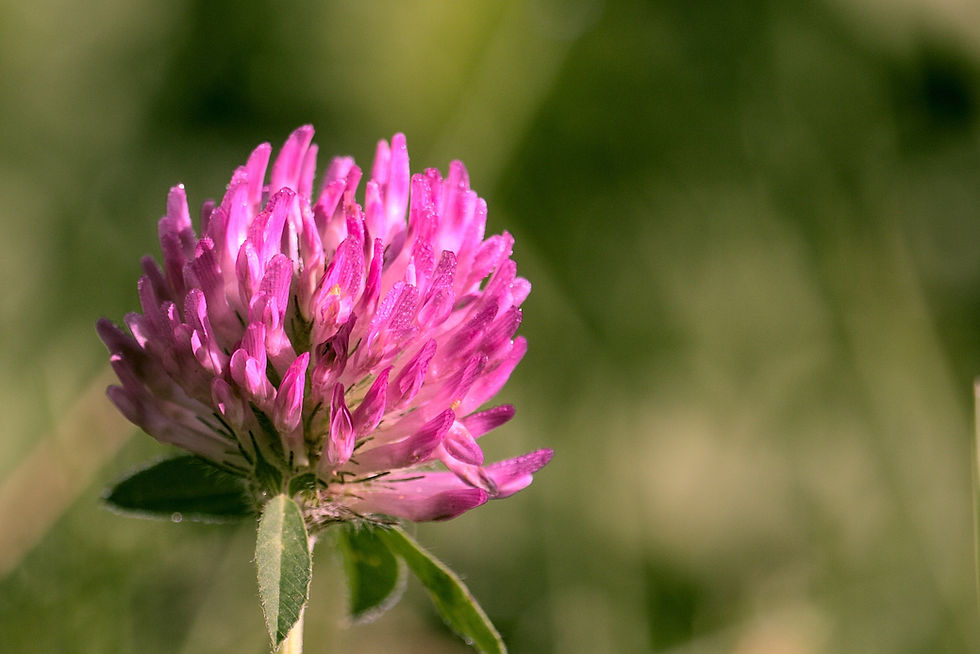Rough Cocklebur (Xanthium strumarium) - coffee alternative?
- Dorota

- Nov 12, 2022
- 4 min read
You wouldn't look twice at Cocklebur discarding it as another infestatious plant. Children, however, seem to be drawn to its prickly fruits. By coincidence, it was just at the time I was studying this herb when my daughter came back from school with a pocketful of Xanthium fruits. I felt immediately attracted to its smell, which seemed tabacco-like at first but I later realised (when toasting them) that they have a roasted coffee smell.
It came to me as no surprise, when I dag into the literature on Cocklebur, that it includes "seven caffeoylquinic acid (CQA) derivatives"**. Yes, the same that are in your espresso and they are a type of antioxidants. Studies confirm that CQA have "protective effects against type 2 diabetes and Alzheimer’s disease"* meaning for prevention and treatment of these diseases and other, which I will mention later.
So, the first thing I did after collecting its fruits, toasting them and cleaning meticulously from the spikes (which unfortunately contain most of its toxic substances) I brewed them into a tasty tea, which resembles more a coffee in effect. And out of all the coffee alternatives I have ever tried I must say this one has the closest aroma to the roasted coffee out of all. Its bitter and acid levels are contained, unlike chicory, which is predominantly bitter and lacking the coffee aroma for satisfying my olfactory senses. It is said that precicely its aroma is what traditionally gave Xanthium its use in openeing up the nose passages.
In fact, it has such an intense aroma that more contemporary use of this plant has been tested as an essential oil. One study has confirmed the Xanthium EO "inhibited the growth of Staphylococcus aureus, Bacillus subtilis, Klebsiella pneumoniae, Pseudomonas aeruginosa, Candida albicans and Aspergillus niger"***
It is not an intention of this post to list all the studies on Xanthium strumarium, which seem to be truly abundant. However, to give you an idea of the wide-range of compounds and effects this plant has I quote this study:
"Up to now, more than 170 chemical constituents have been isolated and identified from X. strumarium, including sesquiterpenoids, phenylpropenoids, lignanoids, coumarins, steroids, glycosides, flavonoids, thiazides, anthraquinones, naphthoquinones and other compounds. Modern research shows that the extracts and compounds from X. strumarium possess wide-ranging pharmacological effects, including anti- allergic rhinitis (AR) effects, anti-tumor effects, anti-inflammatory and analgesic effects, insecticide and antiparasitic effects, antioxidant effects, antibacterial and antifungal effects, antidiabetic effects, antilipidemic effects and antiviral effects."****
Despite it being seemingly a perfect, local alternative to coffee there are two problems here. The first one is the time it takes to clean the fruits of its spike manually if you have no industrial equipment and intend to harvest your own Cocklebur. The second reason is that this herb should not be consumed for long periods of time, due to its toxicity. Even after removing the prickly spikes from the fruits it is still classified in the Materia Medica of Chinese Medicine as a mildly toxic herb.
In fact it is the millennial use of Xanthium strumarium, in Chinese: Cang Er Zi, 苍耳子, that has inspired so much of the modern research. Cang Er Zi means "Deep Green Ear Seed", however, the lower part of the character contains the word granary and the upper part the word plant/herb. So, we could translate it as Plant Granary Ear Seed. "Plant Granary" explains the relation to the western name Xanthium, xanthos from Greek meaning blond/yellow. It refers to the Cang Er Zi fruits turning from green to yellow as they mature, the same as the grains.
"Granary" already suggests its uses for Damp conditions (granary refers to Stomach which is damp in nature); the Deep Green refers to its Liver affinity and its ability to treat Wind conditions and eye conditions that result in headaches; Ears to its ability to open the orifices, particularly the ears and the nose, the last one giving it affinity to Lungs. Cang Er Zi is warming so it is used to treat Cold conditions.
In fact, the ancients have found the best use of Xanthium in opening up the blocked sinus cavity (sinusitis) with the Xanthium Powder/Cang Er Zi San formula. According to the Classical Chinese Medicine if your cold becomes sinusitis (cold plus phlegm) and continues unresolved it will result in aches and pains in your limbs, aka rheumatic pains. Hence it brings me to suggest that Cang Er Zi is perfect for this cold season in cases you cannot get rid of your blocked nose and especially if you start noticing musculoskeletal aches at the same time.
Its bitter taste makes it duretic and its slightly spicy taste makes your skin breathe and eliminate. This aids Wei Qi, which are your defences. The sweet taste of Cang Er Zi is relaxing. My final judgement of Xanthium is that it is a potent and balanced herb if used in acute conditions for a short period of time. It may not be my everyday coffee alternative but at least when I need it I will look forward to its coffee aroma.
If you would like to find out if Xanthium is the right herb for you, book an appointment for a consultation.
References:














Comments